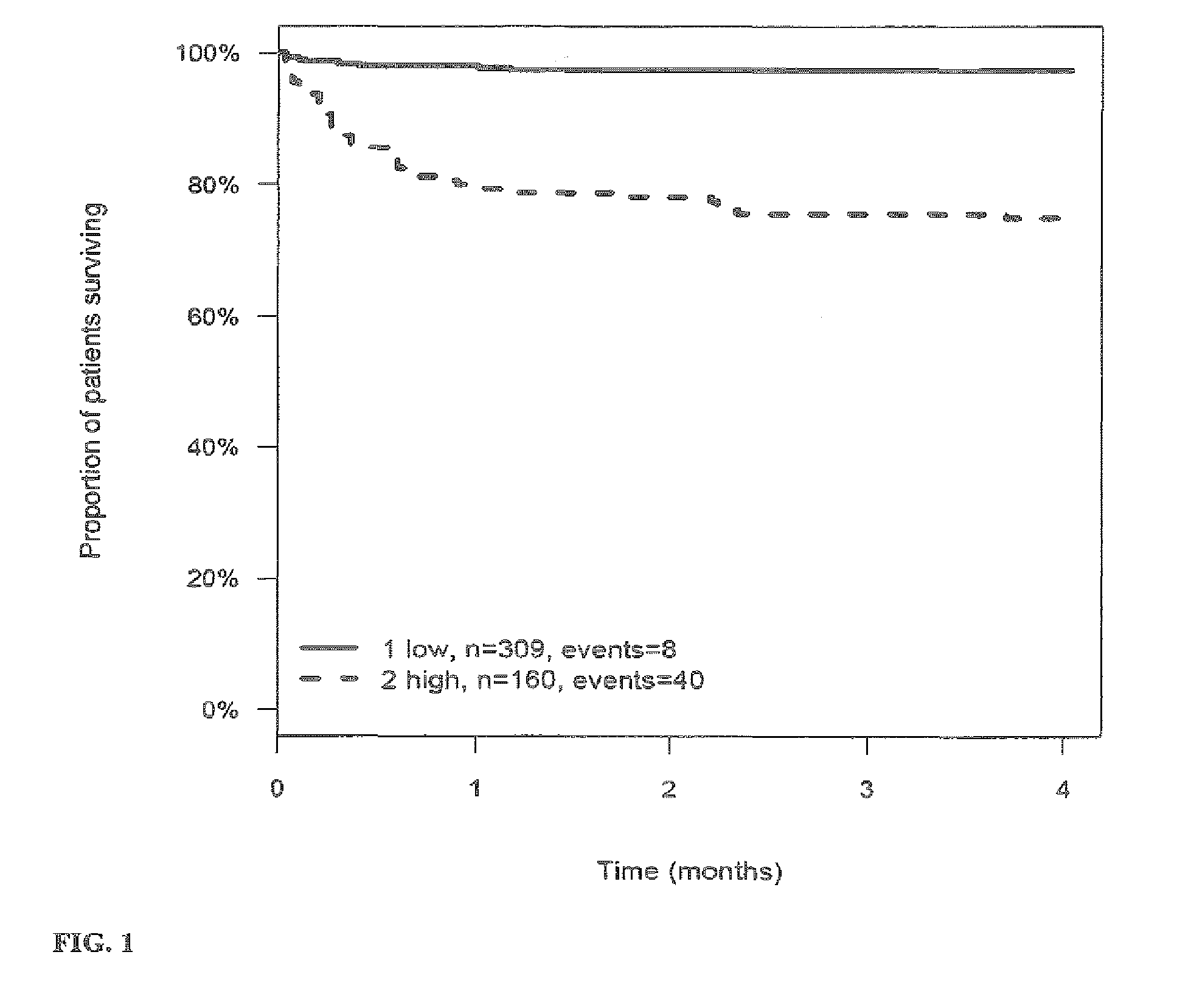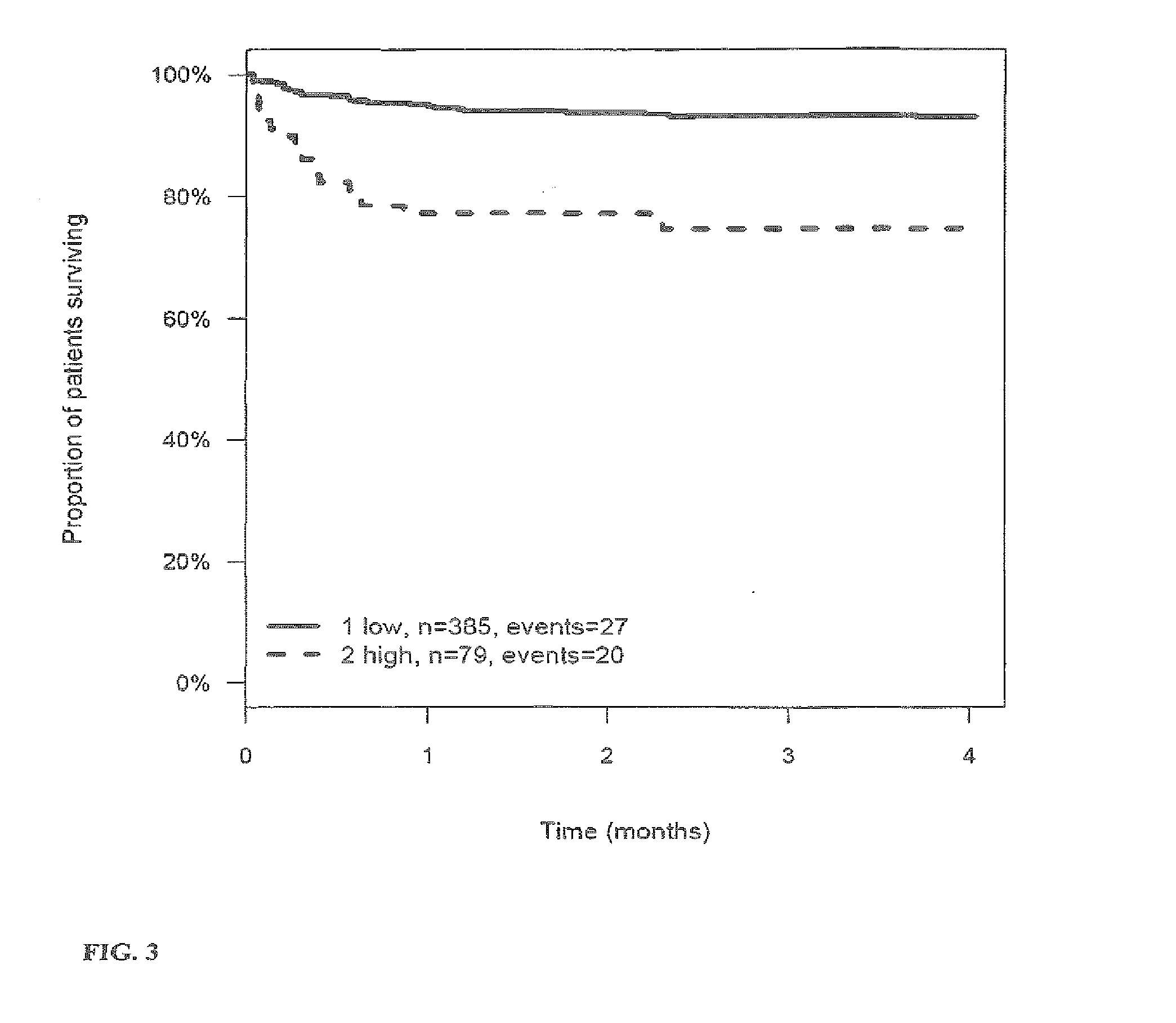Prognosis and risk assessment in stroke patients by determining the level of marker peptides
a marker peptide and patient technology, applied in the field of clinical diagnostics, can solve the problems of a burden on health care providers, high risk of subsequent adverse events for patients representing tia, and important public health problems, and achieve the effect of less effective methods in patients suffering from acute ischemic insults
- Summary
- Abstract
- Description
- Claims
- Application Information
AI Technical Summary
Benefits of technology
Problems solved by technology
Method used
Image
Examples
example 1
Study Setting, Inclusion / Exclusion Criteria
[0247]The study was set at the emergency and neurological and neurosurgical clinic of the University Hospital of Basel. All consecutive patients who are admitted to the emergency department with an ischemic or hemorrhagic stroke or transient ischemic attack (TIA) according to the World Health Organization criteria with symptom onset within the last 3 days were included into the study. Patients without an informed consent were excluded.
Baseline Data Collection
[0248]Access to data of all eligible patients that are not included into this study is important to avoid a selection bias. Thus, baseline data and information on inclusion and exclusion criteria in all eligible patients were collected irrespective whether they are or are not included into the study. This allows the comparison of baseline data of eligible patients who consented to participate with those who did not. Baseline data collection in patients were collected by th...
examples 2 to 11
[0268]Examples 2 to 11 concern the same group of patients and are based on the study of example 1. Tables 1 and 2 summarize the patients of the study and their outcome. Blood samples (EDTA treated plasma samples) were taken from a group of 501 stroke or TIA patients. The group of patients is the same as in example 1, however, the number may slightly differ, since not for all days all patients were available and not on all days enough sample volume was available for every patient to determine all markers.
example 2
Prognosis of Survival (Death within 3 Months) with Markers Measured on Day 0
[0269]The outcome for patients with stroke or TIA within 3 (4) months after the stroke or TIA is investigated and correlated to the level of the markers MR-proANP, MR-proADM, CT-proAVP, CT-proET1 and PCT in samples of said patients. Samples have been taken on day 0 (day of hospitalization). From this correlation hazard ratios (HR) have been calculated for the given cut-off values (threshold values). The cut-off values have been determined by maximizing the sum of sensitivity and specificity as determined from time-dependent ROC analysis.
[0270]Tables 3a to 4 summarize the HR values for the different markers and their combinations. FIGS. 1 to 27 show the Kaplan-Meier plots (proportion of patients surviving within four months) for the different markers / marker combinations and in combination with Ranking / Barthels Index / NIHSS.
TABLE 1Summary of patientsdefinite diagnosisfrequencypercentagehemorrhagic stroke326.4is...
PUM
| Property | Measurement | Unit |
|---|---|---|
| concentration | aaaaa | aaaaa |
| Neuroradiological imaging | aaaaa | aaaaa |
| CT | aaaaa | aaaaa |
Abstract
Description
Claims
Application Information
 Login to View More
Login to View More - R&D
- Intellectual Property
- Life Sciences
- Materials
- Tech Scout
- Unparalleled Data Quality
- Higher Quality Content
- 60% Fewer Hallucinations
Browse by: Latest US Patents, China's latest patents, Technical Efficacy Thesaurus, Application Domain, Technology Topic, Popular Technical Reports.
© 2025 PatSnap. All rights reserved.Legal|Privacy policy|Modern Slavery Act Transparency Statement|Sitemap|About US| Contact US: help@patsnap.com



